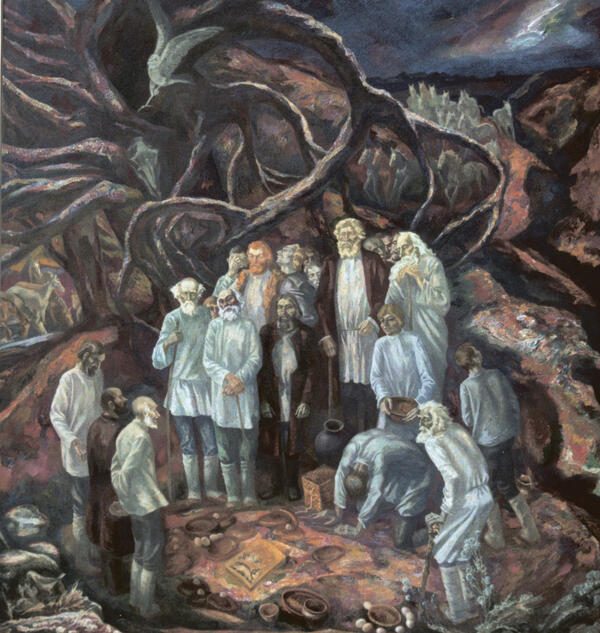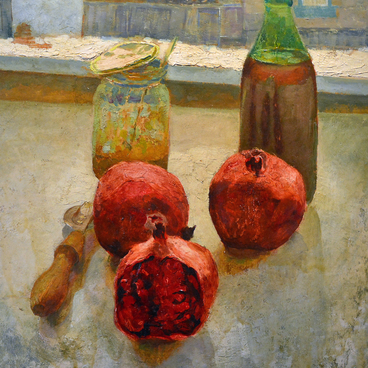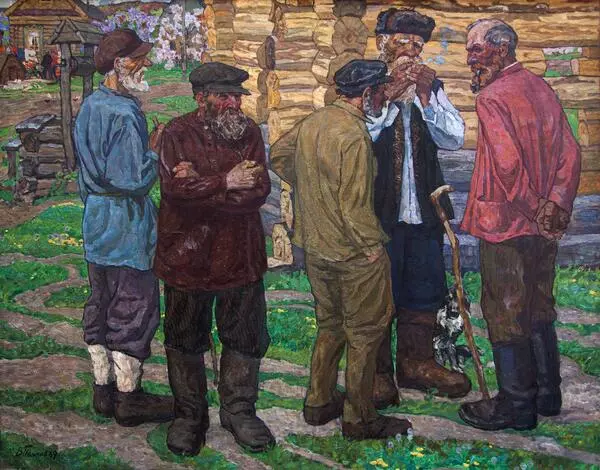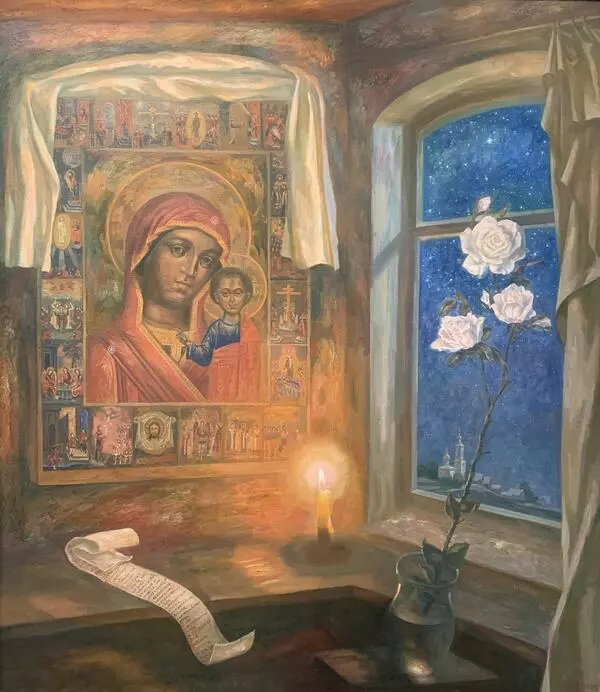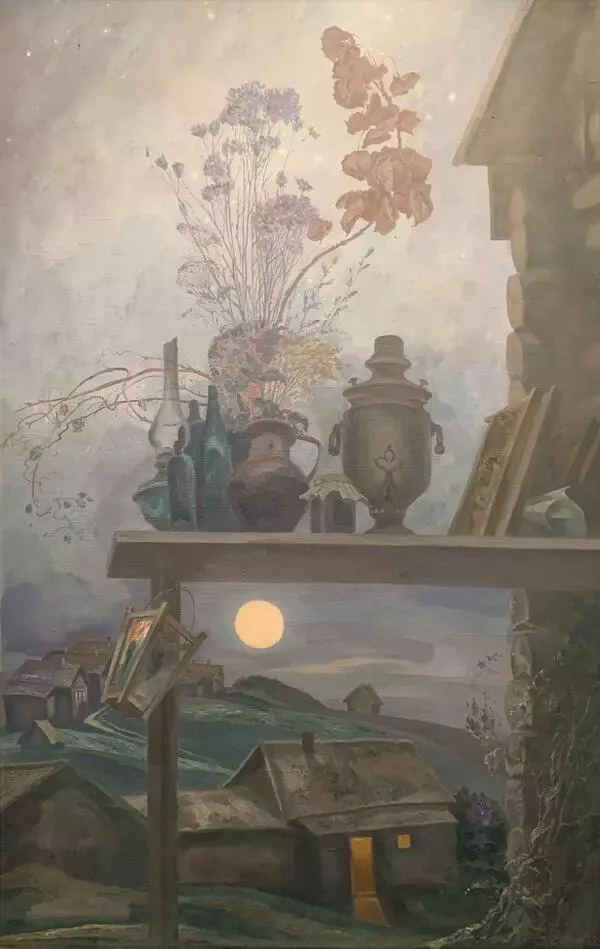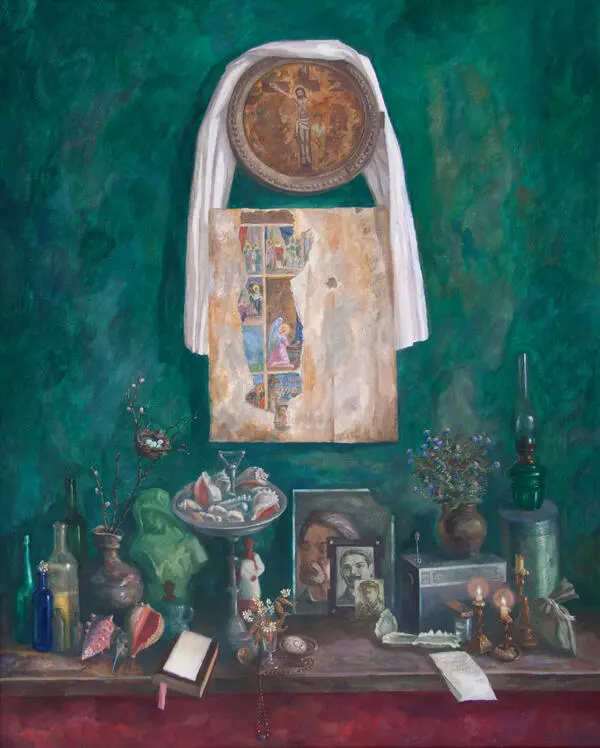At the turn of the 21st century, the theme of spirituality becomes prominent in the visual arts of Mordovia. The search for eternal values is primarily reflected in the work of the artist Valentin Alekseevich Popkov. In the 1990s, the mature painter examines the complex contradictions of the surrounding reality that arose with the perestroika and collapse of the Soviet Union. The philosophical canvases “Prayer about Horses” (1989), “Dark Day” (1991) and a number of other works reveal his dramatic worldview, expressing the artist’s subjective and emotional perception of modernity.
The “Prayer about Horses” is one of the most illustrative canvases that show the development of the spiritual theme in Valentin Popkov’s art. The painting is dedicated to the memory of the famous ethnographer Makar Evsevevich Evsevyev. The researcher observed and described the customs of the Mordvins. Based on these descriptions, Valentin Popkov reproduces the details of the traditional prayer for the multiplication of livestock and for the future harvest.
A group of villagers have gathered under a sacred tree. In the center of the semicircle on the grass there is an icon of Florus and Laurus — Christian saints who were revered as patrons of horses and livestock in general. Votive offerings are laid out around the icon: eggs, bread and other viands.
The characters of the painting are frozen in prayer. Valentin Popkov boldly combines the past and the present, the general and the individual. Thus, the heroes of the canvas are Mordovian peasants and contemporaries of the artist, the historical Elder and ethnographer Makar Evsevyev, the sculptor Stepan Erzia and Valentin Popkov himself.
All together, these depictions form a collective image of modern humanity, which needs to choose the right path among the jarring movement of the tectonic plates and the lava of world cataclysms. Many parts of the painting are replete with symbols. For instance, the mighty sacred tree, under which the ceremony is performed, evokes the image of the World Tree. In the third plane, we can see a mythical herd of horses, in which, according to the belief of the Mordvins, live the souls of their ancestors, and the sky “threatens” with lightning.
Thus, the artist managed, on the one hand, to portray the Mordovian custom truthfully and reliably, and on the other — to take the canvas beyond the limits of the external plot and imbue it with a profound philosophical meaning. Thanks to several symbolic details, the artist creates a complex image of a real and irreal world. The painter allegorically calls for the unity of peoples, the preservation of faith, and the observance of humanist traditions. This canvas is extremely relevant.
The “Prayer about Horses” is one of the most illustrative canvases that show the development of the spiritual theme in Valentin Popkov’s art. The painting is dedicated to the memory of the famous ethnographer Makar Evsevevich Evsevyev. The researcher observed and described the customs of the Mordvins. Based on these descriptions, Valentin Popkov reproduces the details of the traditional prayer for the multiplication of livestock and for the future harvest.
A group of villagers have gathered under a sacred tree. In the center of the semicircle on the grass there is an icon of Florus and Laurus — Christian saints who were revered as patrons of horses and livestock in general. Votive offerings are laid out around the icon: eggs, bread and other viands.
The characters of the painting are frozen in prayer. Valentin Popkov boldly combines the past and the present, the general and the individual. Thus, the heroes of the canvas are Mordovian peasants and contemporaries of the artist, the historical Elder and ethnographer Makar Evsevyev, the sculptor Stepan Erzia and Valentin Popkov himself.
All together, these depictions form a collective image of modern humanity, which needs to choose the right path among the jarring movement of the tectonic plates and the lava of world cataclysms. Many parts of the painting are replete with symbols. For instance, the mighty sacred tree, under which the ceremony is performed, evokes the image of the World Tree. In the third plane, we can see a mythical herd of horses, in which, according to the belief of the Mordvins, live the souls of their ancestors, and the sky “threatens” with lightning.
Thus, the artist managed, on the one hand, to portray the Mordovian custom truthfully and reliably, and on the other — to take the canvas beyond the limits of the external plot and imbue it with a profound philosophical meaning. Thanks to several symbolic details, the artist creates a complex image of a real and irreal world. The painter allegorically calls for the unity of peoples, the preservation of faith, and the observance of humanist traditions. This canvas is extremely relevant.

